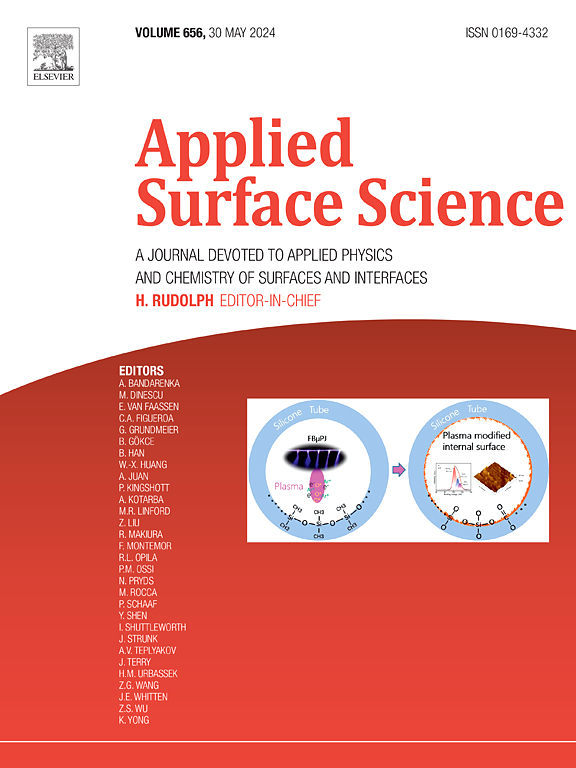Wettability characteristics of lunar soil particles from the Chang’E-5 mission: A single-particle surface analysis
IF 6.3
2区 材料科学
Q2 CHEMISTRY, PHYSICAL
引用次数: 0
Abstract
Lunar base construction has emerged as a strategic focus for global space agencies, with extrusion-based in situ resource utilization technologies recognized as a promising approach for utilizing lunar soil. However, a critical aspect of this technology lies in understanding the wettability characteristics between lunar soil and binding agents, such as water or resin. Here, the wetting dynamics were quantitatively analyzed through a custom-developed experimental apparatus combining ultra-deep field microscopy with a precision liquid evaporator. Our results demonstrate that the contact angle between a particle and water averages 108.73° with a standard deviation of 3.60°, thus indicating hydrophobicity. This phenomenon is primarily attributed to the distinctive surface morphology of the particle, characterized by adherent structures, porous architecture, and heterogeneous mineral fragments. Numerical simulations of droplet wetting behavior confirm that the Cassie-Baxter model accurately describes the observed phenomena. Through integrated experimental and computational analysis, we determined a surface tension of 8.46 mN/m between particles and water. For resin-particle interactions, the calculated Young contact angle of 96.18° exceeds the directly computed 91.90° from Young equation. This study establishes a novel framework for characterizing contact angles on micron-scale rough particles and provides crucial empirical support for extrusion-based extraterrestrial construction.


嫦娥五号月球土壤颗粒润湿性特征:单颗粒表面分析
月球基地建设已成为全球航天机构的战略重点,以挤压为基础的原地资源利用技术被认为是一种很有前途的利用月球土壤的方法。然而,这项技术的关键在于了解月球土壤与水或树脂等结合剂之间的润湿特性。在这里,我们通过定制开发的实验设备,结合超深场显微镜和精密液体蒸发器,对润湿动态进行了定量分析。结果表明,颗粒与水的接触角平均为 108.73°,标准偏差为 3.60°,这表明颗粒具有疏水性。这种现象主要归因于颗粒独特的表面形态,其特点是附着结构、多孔结构和异质矿物碎片。液滴润湿行为的数值模拟证实,卡西-巴克斯特模型准确地描述了观察到的现象。通过综合实验和计算分析,我们确定颗粒与水之间的表面张力为 8.46 mN/m。对于树脂与颗粒之间的相互作用,计算得出的杨氏接触角为 96.18°,超过了根据杨氏方程直接计算得出的 91.90°。这项研究为表征微米级粗糙颗粒的接触角建立了一个新的框架,并为基于挤压的地外建筑提供了重要的经验支持。
本文章由计算机程序翻译,如有差异,请以英文原文为准。
求助全文
约1分钟内获得全文
求助全文
来源期刊

Applied Surface Science
工程技术-材料科学:膜
CiteScore
12.50
自引率
7.50%
发文量
3393
审稿时长
67 days
期刊介绍:
Applied Surface Science covers topics contributing to a better understanding of surfaces, interfaces, nanostructures and their applications. The journal is concerned with scientific research on the atomic and molecular level of material properties determined with specific surface analytical techniques and/or computational methods, as well as the processing of such structures.
 求助内容:
求助内容: 应助结果提醒方式:
应助结果提醒方式:


